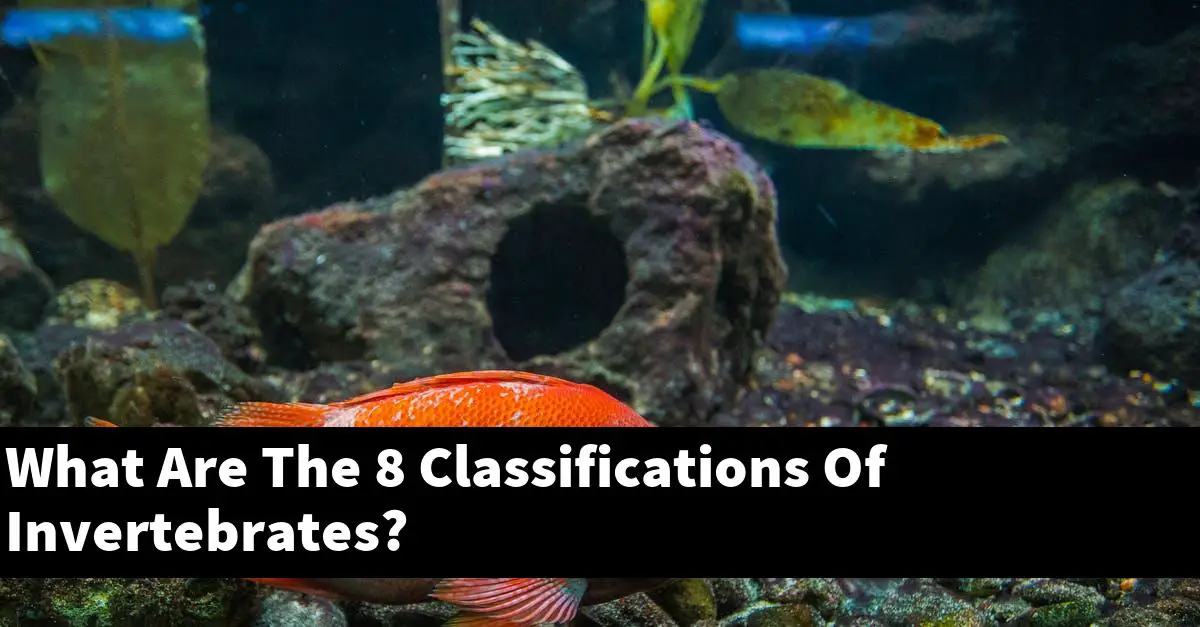Invertebrates are animals that lack a backbone. There are about 1.3 million known species of invertebrates, making them the most diverse group of animals on Earth.
The eight main classes of invertebrates are mollusks, arthropods, echinoderms, chordates, sponges, cnidarians, ctenophores, and flatworms.
What are the 7 classes of vertebrates?
Vertebrates are a group of animals that include all the jawed vertebrates, such as fish, amphibians, reptiles, and birds. Vertebrates have a backbone, and their spinal cord extends from the base of the skull to the tail.
They have a spinal cord covered by a tough exoskeleton, which gives them their ability to move their limbs and body. In addition, vertebrates have a skull that encloses the brain, and they have a heart that pumps blood.
What are the 9 major groups of invertebrates?
The nine major groups of invertebrates are arthropods, mollusks, annelids, chordates, echinoderms, and protozoa.
What are the classifications of invertebrate?
Invertebrates are classified according to the type of body they have. The three main types of invertebrates are animals, plants, and fungi.
Animals have a backbone and are able to move around. Plants have a stem and roots, and fungi are single-celled organisms.
What is the difference between invertebrates and arthropods?
Invertebrates are animals without a backbone and arthropods are animals with a backbone.
How is life classified by the presence of vertebrates?
The classification of life into vertebrates and invertebrates is based on the presence of a spine, or not, on the number of limbs a creature has, and on the type of cell nucleus. Vertebrates have a spinal cord, and invertebrates do not.
What are the 4 types of invertebrates?
The four types of invertebrates are arthropods, mollusks, annelids, and chordates.
How many types of invertebrate are there?
There are over a thousand invertebrate species on Earth. Each type of invertebrate has its own unique set of traits and abilities.
Some invertebrates, like nematodes, are parasites that eat other organisms. Other invertebrates, like jellyfish, are capable of moving through the water using their tentacles.
Conclusion
There are eight major classifications of invertebrates: mollusks, arthropods, echinoderms, chordates, annelids, sponges, cnidarians, and flatworms. Mollusks include snails and slugs, while arthropods include insects and spiders.
Echinoderms include sea stars and sea urchins, while chordates include vertebrates such as fish. Annelids are segmented worms such as earthworms, while sponges are simple animals that lack a nervous system.
Cnidarians include jellyfish and corals, while flatworms include tapeworms.

